There’s a simple reason many people struggle to build wide, strong lats: they do the wrong lat exercises.
Search the internet for the best lat exercises, and you’ll find a bewildering number of articles and videos about lat training, often claiming that the best way to grow your lats is with “quirky” exercises like renegade rows, bodyweight supermans, and towel lat pulldowns.
This is blatherskite.
You only need a handful of effective exercises to build the back you want.
In this article, you’ll learn what those exercises are and why they’re so effective.
The Anatomy of the Lat Muscles
The latissimi dorsi, or “lats” are the large, fan-shaped muscles that start at the base of the spine, wrap around the sides of the torso, and connect to the upper arm.
Here’s what they looks like:
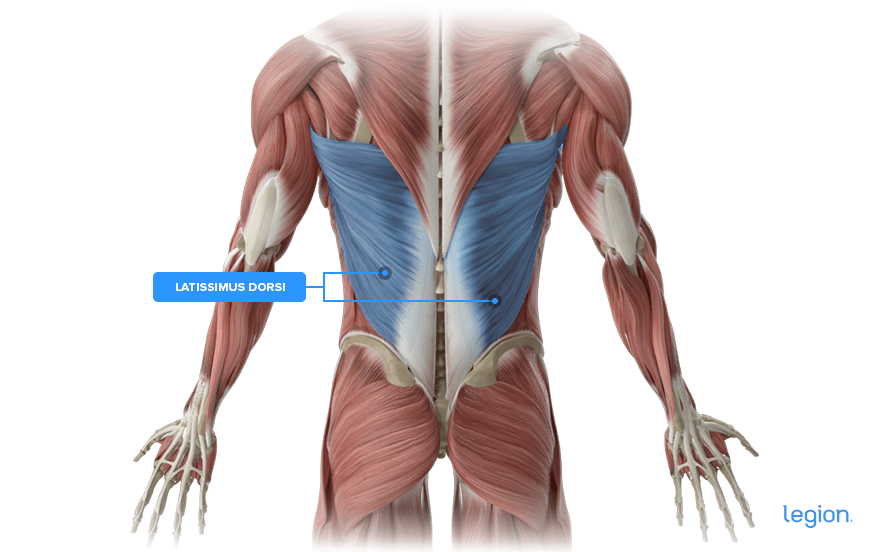
The lats’ main functions include:
- Shoulder adduction: Pulling your upper arms from out at your sides closer to your torso.
- Shoulder extension: Moving your arms from out in front of you closer to your torso.
They also help stabilize your upper body during exercises like the deadlift, squat, and bench and overhead press.
How to Target the Lat Muscles
Here’s how to optimally target your lat muscles:
- Use a mix of vertical and horizontal pulling exercises: Training you lats at different angles and in different directions using a mix of vertical and horizontal pulling exercises causes superior growth than training them in just one way.
- Use effective weightlifting cues: Effective weightlifting cues can help you train your lats more effectively. For example, imagine “pulling your elbows into the floor” while performing vertical pulling exercises, and think about “slamming your elbows into the ceiling” during horizontal pulling exercises when your torso is parallel to the floor.
- Emphasize progressive overload: As I explain in my fitness books for men and women, the best way to gain muscle and strength is to lift heavy, which means doing most of your exercises with 75-to-85% of your one-rep max (4-to-10 reps per set). You should also strive to add weight or reps to every exercise in every workout.
The 11 Best Exercises for the Lats
You can find countless lists of lat exercises online, but most of them are hokum.
Here are the 11 best lat exercises for mass to include in your lat workouts.
1. Deadlift
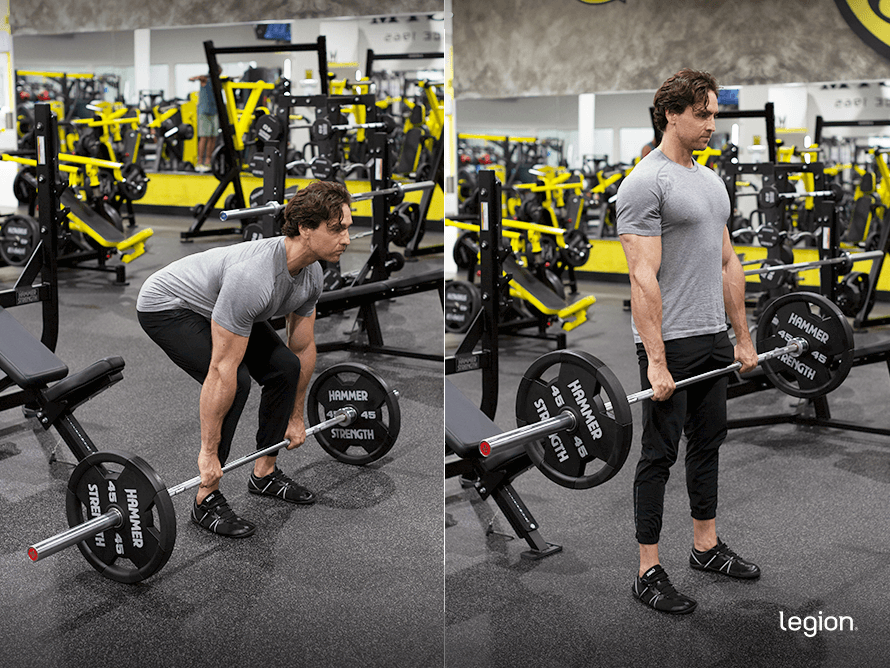
The deadlift is the best all-around back exercise because it trains every muscle group in your “posterior chain,” including the lats. It also allows you to lift heavy weights and progress regularly, making it ideal for gaining muscle and strength.
How to:
- Position your feet slightly narrower than shoulder-width apart with your toes pointed slightly out.
- Move a loaded barbell over your midfoot, so it’s about an inch from your shins.
- Take a deep breath into your belly, then place your hands on the bar just outside your shins with your palms facing you.
- Flatten your back and drive your body upward and slightly back by pushing through your heels until you’re standing up straight.
- Reverse the movement and return to the starting position.
2. Pull-up
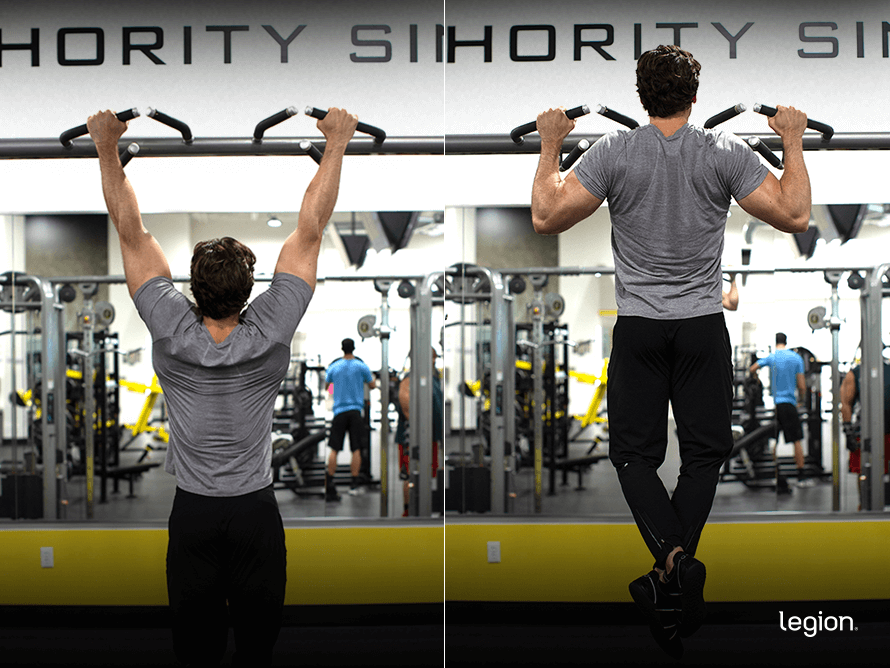
The wide-grip pull-up trains almost every muscle group in your back, but it’s particularly good at targeting the lats.
How to:
- Grab a pull-up bar slightly wider than shoulder-width apart with your palms facing away from you.
- Lift your feet so that you’re hanging with your arms straight.
- Pull your body up until your chin is above the bar.
- Once your chin has passed the bar, lower yourself under control to the starting position in a reverse motion.
3. Chin-up
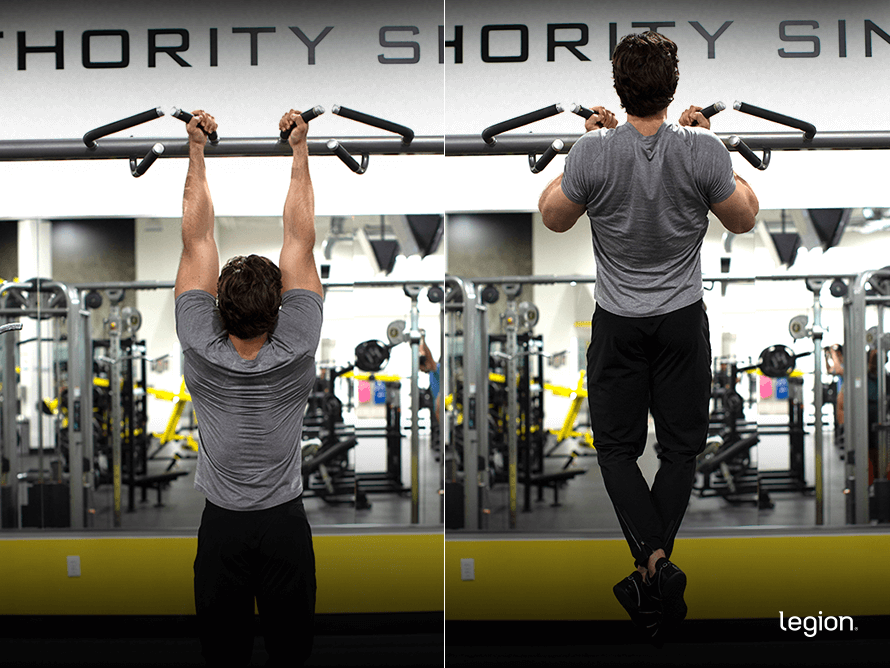
The chin-up trains your lats about as well as the pull-up. The difference is using an underhand grip emphasizes your biceps, whereas the pull-up trains your lower traps slightly more.
How to:
- Grab a pull-up bar with your hands around shoulder-width apart and your palms facing toward you.
- Lift your feet so that you’re hanging with your arms straight.
- Pull your body up until your chin is above the bar.
- Once your chin has passed the bar, lower yourself under control to the starting position.
4. Barbell Bent Over Row
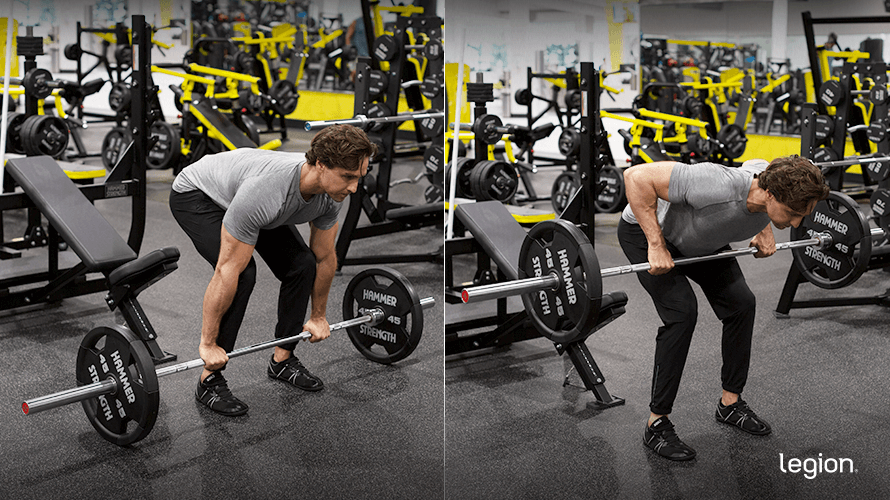
The barbell bent over row allows you to lift heavy weights safely, which makes it ideal for training your entire back and gaining upper-body strength.
How to:
- Position your feet shoulder-width apart under a loaded barbell with your toes pointed slightly outward.
- Bend over and grab the bar with a slightly wider than shoulder-width grip and with your palms facing toward you.
- Straighten your back and raise your hips until your back is roughly parallel to the floor.
- Driving through your legs, then, using the momentum generated by your lower body, squeeze your shoulder blades together and pull the barbell to your upper body, touching it anywhere between your lower chest and belly button.
- Reverse the movement and return it to the starting position.
5. One-Arm Dumbbell Row
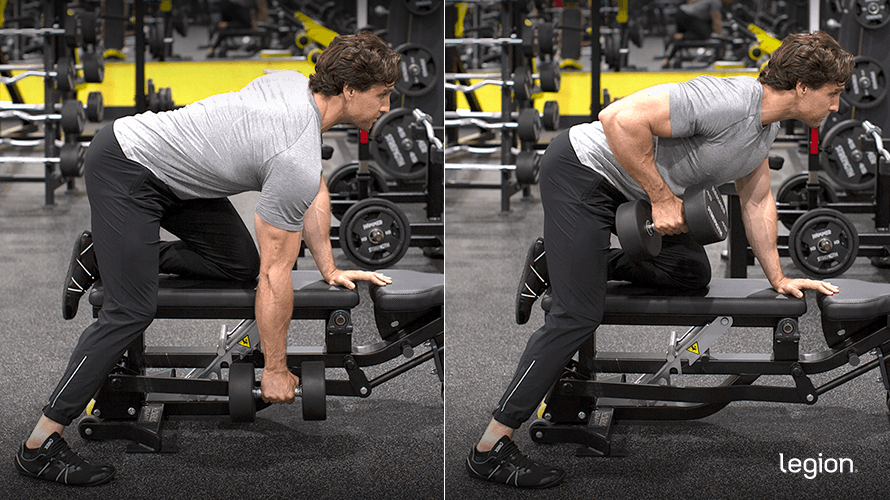
The one-arm dumbbell row trains each side of your body independently, which helps you find and fix muscle imbalances.
How to:
- Hold a dumbbell in your right hand.
- Plant your left knee and hand firmly on a bench, your right foot on the floor a foot or two from the bench, and let your right arm hang straight down toward the floor.
- Keeping your back straight, pull the dumbbell upward until it touches your torso, and then return the dumbbell to the starting position.
- Once you’ve completed the desired number of reps, repeat the process with your left arm.
6. Seated Cable Row
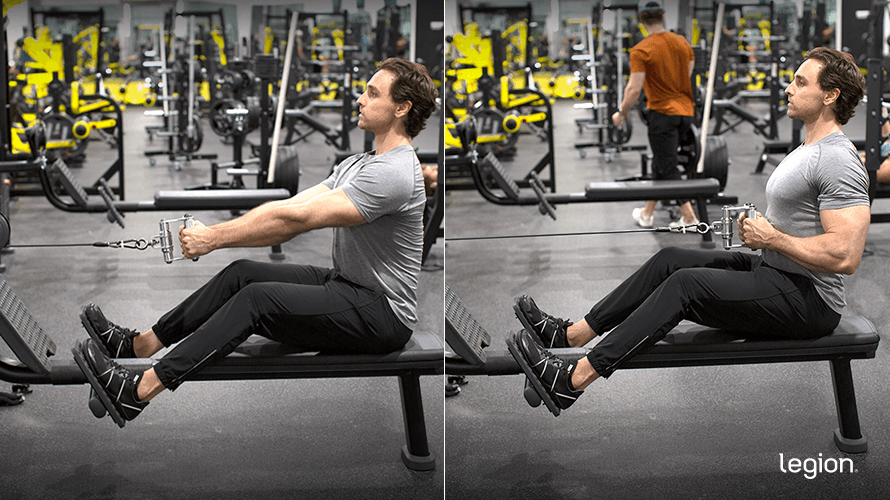
The cable row is a highly effective cable lat exercise that keeps constant tension on your muscles throughout each rep, taxing your back muscles slightly differently to free-weight lat exercises.
How to:
- Sit down on the cable row machine and place your feet on the foot-rest with your knees slightly bent.
- Lean forward and grab the handle, then lean back with your arms stretched in front of you.
- Straighten your back and pull the handle toward your stomach.
- Once your hands touch your torso, reverse the movement and return to the starting position.
7. Lat Pulldown
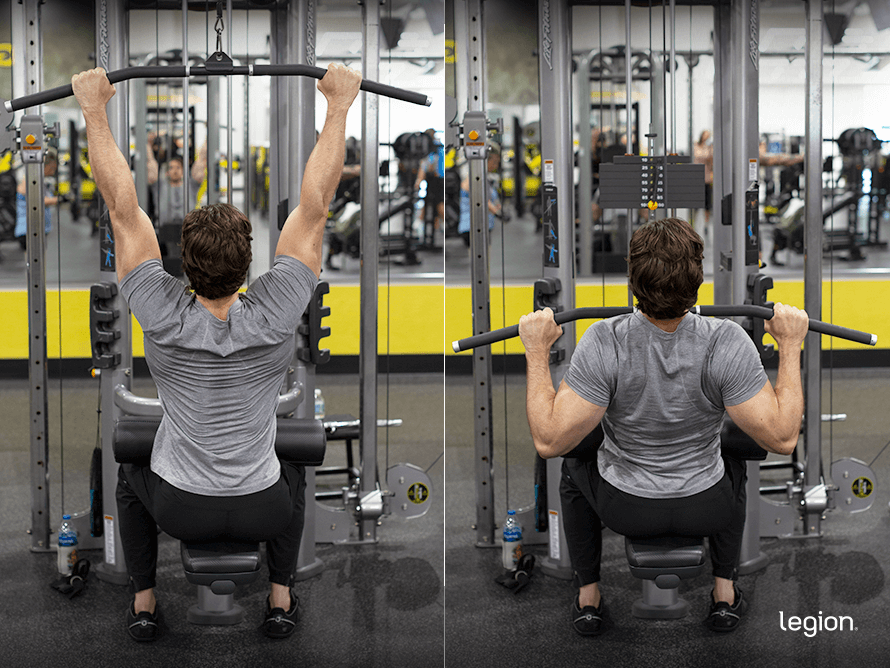
The lat pulldown trains every muscle in your back, and is particularly effective at training the lats.
- Adjust the thigh pad so that it locks your lower body in place.
- Stand up and grab the bar. While keeping your grip on the bar and your arms straight, sit down, allowing your body weight to pull the bar down with you.
- Nudge your thighs under the pads and plant your feet on the floor.
- Pull the bar toward your chest.
- Once the bar is underneath your chin, reverse the movement and return to the starting position.
8. Cable Pullover
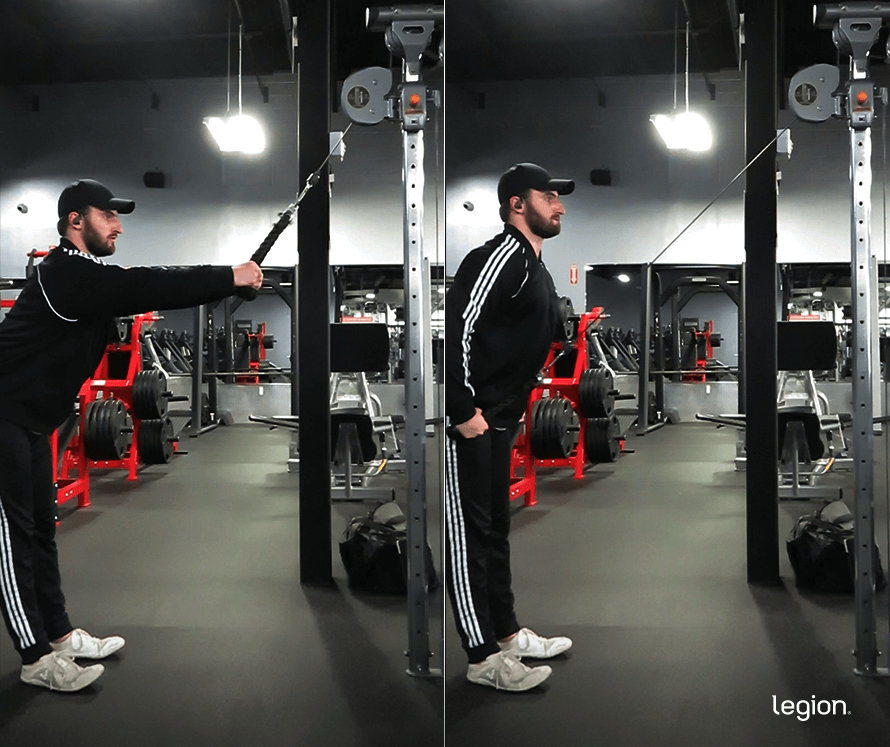
The cable pullover trains your lats in a fully stretched position and through a long range of motion, which is generally superior for muscle growth. If you don’t have access to a cable machine, substitute the cable pullover for the dumbbell pullover. The dumbbell pullover trains your lats similarly to the cable version, making it a worthy alternative.
How to:
- Set the pulley to the highest position on a cable machine and attach the rope handle.
- Hold one end of the rope in each hand, and step away from the pulley until you feel tension in the cable.
- Lean forward until your body makes a 45-degree angle with the floor and your arms are nearly straight overhead.
- Set your feet shoulder-width apart and bend your knees a little.
- Keep a small bend in your elbows and pull the rope in an arc toward your feet until your hands are by your thighs or a little past them.
- Reverse the movement and return to the starting position.
9. Hammer Strength High Row
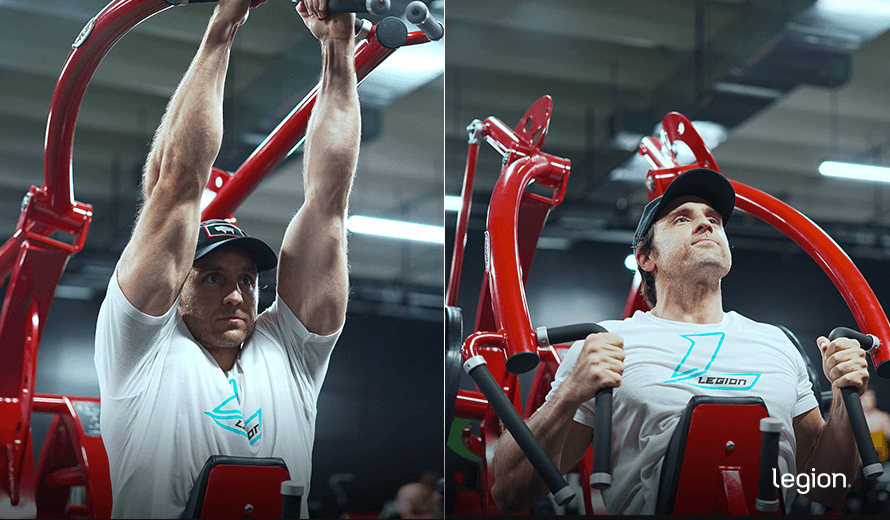
The Hammer Strength high row machine lets you train your lats at a slightly different angle than most other exercises, which helps you optimize lat development.
How to:
- Sit on the Hammer Strength high row machine seat with your chest against the chest pad.
- Lean forward and grab the handles with your palms facing each other.
- Pull the handles toward your body until your hands are by your sides.
- Reverse the movement and return to the starting position.
10. Seal Row

Because you lie prone on a bench during the seal row, you can’t generate momentum with your lower body. This forces your back muscles to do the majority of the work and ensures you stimulate them sufficiently.
How to:
- Place a loaded barbell under a seal row bench, then lie prone on the bench.
- Grab the bar with a slightly wider than shoulder-width grip and your palms facing toward your feet.
- Pull the barbell toward your upper body until it touches the underside of the bench.
- Reverse the movement and return to the starting position.
11. Meadows Row

Because you anchor the barbell at one end in the Meadows row, it trains your lats through a slightly different range of motion than other exercises in your workouts for lats, which is beneficial for muscle and strength gain.
How to:
- Wedge one end of a barbell into the corner of the room or insert it into a landmine attachment and load the other end with weight.
- Position your right foot perpendicular to the weighted end of the barbell and your left foot 2-to-3 feet behind your right.
- Bend over at the waist until your back is almost parallel with the floor and grab the end of the barbell with your left hand.
- Pull the bar until your hand touches your torso, then lower it to the starting position.
- Once you’ve completed the desired number of reps, repeat on your right side.
Scientific References +
- Wu, Jonathan, and Bruno Bordoni. “Anatomy, Shoulder and Upper Limb, Scapulohumeral Muscle.” PubMed, StatPearls Publishing, 2020, www.ncbi.nlm.nih.gov/books/NBK546633/.
- Fonseca, Rodrigo M., et al. “Changes in Exercises Are More Effective than in Loading Schemes to Improve Muscle Strength.” Journal of Strength and Conditioning Research, vol. 28, no. 11, Nov. 2014, pp. 3085–3092, https://doi.org/10.1519/jsc.0000000000000539. Accessed 23 Mar. 2020.
- Kubo, Keitaro, et al. “Effects of Squat Training with Different Depths on Lower Limb Muscle Volumes.” European Journal of Applied Physiology, 22 June 2019, https://doi.org/10.1007/s00421-019-04181-y.
- Barakat, Christopher, et al. “The Effects of Varying Glenohumeral Joint Angle on Acute Volume Load, Muscle Activation, Swelling, and Echo-Intensity on the Biceps Brachii in Resistance-Trained Individuals.” Sports, vol. 7, no. 9, 4 Sept. 2019, p. 204, https://doi.org/10.3390/sports7090204. Accessed 21 Mar. 2021.
- NOE, DONALD A., et al. “Myoelectric Activity and Sequencing of Selected Trunk Muscles during Isokinetic Lifting.” Spine, vol. 17, no. 2, Feb. 1992, pp. 225–229, https://doi.org/10.1097/00007632-199202000-00018. Accessed 15 Nov. 2019.
- Snarr, Ronald L., et al. “Electromyographical Comparison of a Traditional, Suspension Device, and Towel Pull-Up.” Journal of Human Kinetics, vol. 58, 1 Aug. 2017, pp. 5–13, www.ncbi.nlm.nih.gov/pmc/articles/PMC5548150/, https://doi.org/10.1515/hukin-2017-0068.
- Youdas, James W, et al. “Surface Electromyographic Activation Patterns and Elbow Joint Motion during a Pull-Up, Chin-Up, or Perfect-PullupTM Rotational Exercise.” Journal of Strength and Conditioning Research, vol. 24, no. 12, Dec. 2010, pp. 3404–3414, https://doi.org/10.1519/jsc.0b013e3181f1598c.
- Fenwick, Chad M J, et al. “Comparison of Different Rowing Exercises: Trunk Muscle Activation and Lumbar Spine Motion, Load, and Stiffness.” Journal of Strength and Conditioning Research, vol. 23, no. 2, Mar. 2009, pp. 350–358, https://doi.org/10.1519/jsc.0b013e3181942019.
- Ronai, Peter. “The Barbell Row Exercise.” ACSMʼs Health & Fitness Journal, vol. 21, no. 2, 2017, pp. 25–28, https://doi.org/10.1249/fit.0000000000000278.
- Handa, Tohru , et al. Comparative Electromyographical Investigation of the Biceps Brachii, Latissimus Dorsi, and Trapezius Muscles during Five Pull Exercises. Apr. 2005, pp. 159–168, https://doi.org/10.7600/jspfsm.54.159.
- Doma, Kenji, et al. “Kinematic and Electromyographic Comparisons between Chin-Ups and Lat-Pull down Exercises.” Sports Biomechanics, vol. 12, no. 3, Sept. 2013, pp. 302–313, https://doi.org/10.1080/14763141.2012.760204.
- Park, Se-yeon, and Won-gyu Yoo. “Differential Activation of Parts of the Latissimus Dorsi with Various Isometric Shoulder Exercises.” Journal of Electromyography and Kinesiology, vol. 24, no. 2, Apr. 2014, pp. 253–257, https://doi.org/10.1016/j.jelekin.2013.12.004.
- Gerling, Michael E., and Stephen H. M. Brown. “Architectural Analysis and Predicted Functional Capability of the Human Latissimus Dorsi Muscle.” Journal of Anatomy, vol. 223, no. 2, 13 June 2013, pp. 112–122, https://doi.org/10.1111/joa.12074.
- Schoenfeld, Brad J, and Jozo Grgic. “Effects of Range of Motion on Muscle Development during Resistance Training Interventions: A Systematic Review.” SAGE Open Medicine, vol. 8, no. 8, Jan. 2020, p. 205031212090155, https://doi.org/10.1177/2050312120901559.
- Oranchuk, Dustin J., et al. “Isometric Training and Long-Term Adaptations: Effects of Muscle Length, Intensity, and Intent: A Systematic Review.” Scandinavian Journal of Medicine & Science in Sports, vol. 29, no. 4, 13 Jan. 2019, pp. 484–503, https://doi.org/10.1111/sms.13375.










